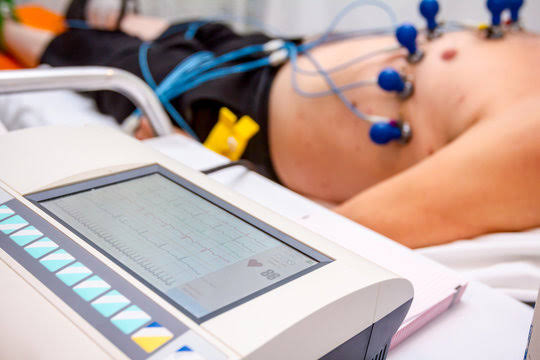ECG Sialkot Heart & Medical Centre Sialkot

Electrocardiography (ECG) and its Indications
Electrocardiography, often abbreviated as ECG or EKG, is a fundamental diagnostic tool in the field of cardiology and a critical component of routine medical examinations. This non-invasive test records the electrical activity of the heart, providing invaluable information about its function and rhythm. ECG plays a crucial role in the early detection, diagnosis, and management of various cardiac conditions. This article explores the principles of ECG and its common indications in clinical practice.
Principles of ECG
An ECG records the electrical impulses that trigger each heartbeat. These impulses originate in the sinoatrial (SA) node, the heart’s natural pacemaker, and spread through the atria and ventricles, causing them to contract. The ECG machine detects these electrical signals and represents them as waves on a graph.
The standard ECG consists of multiple leads or electrodes placed on the skin’s surface at specific locations, each with a unique view of the heart’s electrical activity. The most common ECG uses 12 leads and is referred to as a 12-lead ECG. The resulting waveforms are grouped into several categories:
- P-Wave: Represents atrial depolarization.
- QRS Complex: Reflects ventricular depolarization.
- T-Wave: Corresponds to ventricular repolarization.
By analyzing these components and their intervals, healthcare providers can assess the heart’s rhythm, rate, and various abnormalities.
Indications for ECG
1. Chest Pain or Discomfort: ECG is frequently performed when a patient presents with chest pain or discomfort. It helps distinguish between heart-related causes (like myocardial infarction or angina) and other non-cardiac issues.
2. Arrhythmias: ECG is used to diagnose and classify different types of arrhythmias, such as atrial fibrillation, ventricular tachycardia, and bradycardia. This information is crucial for treatment decisions.
3. Preoperative Assessment: Prior to surgery, an ECG can identify any underlying heart conditions that might pose risks during anesthesia and surgery.
4. Cardiac Screening: ECG is part of routine cardiac screening in athletes, older adults, and individuals with risk factors for heart disease.
5. Syncope (Fainting): Patients who experience unexplained fainting may undergo ECG to rule out underlying cardiac causes.
6. Monitoring Chronic Conditions: Patients with chronic cardiac conditions, such as heart failure, may undergo regular ECGs to monitor their heart’s function and response to treatment.
7. Drug Monitoring: Some medications, like those for certain arrhythmias, may require ECG monitoring to ensure their safety and effectiveness.
8. ECG Stress Testing: In combination with physical stress, ECG is used to assess heart function during exercise, aiding in the diagnosis of coronary artery disease.
9. Post-Cardiac Event: After a heart attack, cardiac surgery, or other cardiac events, ECG is frequently used to monitor recovery and detect complications.
10. Screening for Asymptomatic Individuals: In some cases, ECG may be used as part of a screening program to identify individuals at risk for heart disease even before they show symptoms.
Conclusion
At Heart and medical centre, we have most advanced ECG machine so if you want to have our ecg in sialkot under supervision of highly professional staff get your appointment today. Electrocardiography is a cornerstone of modern cardiology, providing valuable insights into the electrical activity of the heart. From diagnosing arrhythmias to assessing cardiac function, ECG plays a vital role in clinical practice. It aids in the early detection and management of a wide range of cardiac conditions, ultimately contributing to better patient outcomes and improved cardiovascular health. Understanding the principles and indications of ECG is essential for both healthcare professionals and patients, as it remains an invaluable tool in the field of medicine.
